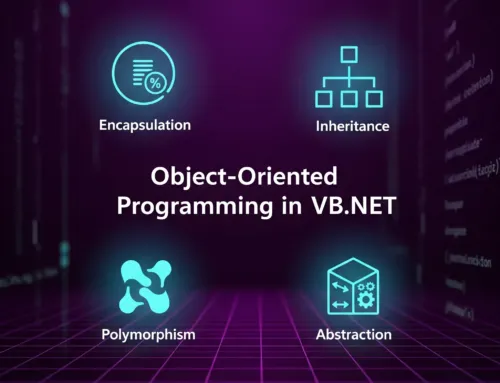
Approx. read time: 3.5 min.
Post: 📋 Copy Text to Clipboard with JavaScript
📋 4. Copy Text to Clipboard with JavaScript
✅ What It Does
This concise one-liner uses the modern Web API navigator.clipboard.writeText() to programmatically copy a given string to the user’s clipboard — just like pressing Ctrl+C.
🧠 Why It’s Useful
-
You can create “Copy” buttons for text, code snippets, promo codes, links, etc.
-
Improves UX by removing the need to manually select text
-
Ideal for progressive web apps (PWAs), dashboards, and dev tools
-
Secure and standardized — works on all major modern browsers
🧪 How It Works
navigator.clipboard.writeText(text):
-
Asynchronously writes the provided text to the clipboard
-
Returns a Promise — which you can use to show a success/failure message
Example with feedback:
| Concern | Details |
|---|---|
| 🔐 Secure context required | Must run over HTTPS or localhost |
| 🚫 Not supported in all browsers | Older Safari and IE require document.execCommand('copy') fallback |
| 👁️ No visual feedback by default | You must show confirmation (e.g., tooltip or toast) |
🛠️ Enhanced Version with Feedback
| Example | Use |
|---|---|
| 🔗 Copy shareable links | Social sharing or invite URLs |
| 🔐 Copy access tokens | Dev tools, dashboards |
| 🎫 Copy promo codes | E-commerce banners |
| 📦 Copy JSON/code blocks | Docs or blog snippets |
| 💬 Copy quotes or text | Notes, messaging apps |
🧾 Final Summary: Understanding Clipboard Access in JavaScript
The ability to programmatically copy text to a user’s clipboard might seem like a small detail — but in the modern web experience, it’s a massive usability enhancer. In this lesson, we explored how JavaScript enables developers to interact directly with the user’s clipboard using the navigator.clipboard.writeText() method.
🔍 What We Covered
-
How modern browsers expose clipboard access through secure, permission-aware APIs.
-
The importance of copy-to-clipboard functionality in real-world applications: whether it’s copying a shareable link, a coupon code, a JSON snippet, or an authentication token.
-
The differences between old and modern methods — specifically how
document.execCommand('copy')is now largely deprecated in favor of the cleaner, promise-basednavigator.clipboardAPI. -
The key limitations developers need to be aware of, such as HTTPS-only restrictions, user permission models, and the lack of built-in visual feedback.
-
A wide range of practical use cases where clipboard access improves the user experience, saves time, and adds polish to your application.
✨ Why It Matters
What seems like a trivial feature — copying something to the clipboard — becomes critical in areas like:
-
Onboarding workflows
-
Developer dashboards
-
Productivity tools
-
Documentation platforms
-
E-commerce sites
-
User personalization features
This one-liner helps bridge the gap between static content and interactive behavior. It empowers developers to provide immediate, action-driven interfaces — all without requiring users to highlight, right-click, or press shortcut keys.
📌 Final Thought
Clipboard access is one of those understated features that, when implemented well, feels invisible — but improves everything. By mastering this pattern, you’re not just learning a JavaScript trick — you’re elevating your UI and UX design mindset.
Ready for the next power move in your JavaScript one-liner journey? Let’s keep going.
📋 Clipboard + Text File Applet
// 📋 Copy text to clipboard
function copyTextToClipboard() {
const textarea = document.getElementById(‘copyText’);
const status = document.getElementById(‘copyStatus’);
const text = textarea.value.trim();
if (!text) {
status.innerText = “⚠️ Please enter text to copy.”;
status.style.color = “#ff6666”;
return;
}
navigator.clipboard.writeText(text).then(() => {
status.innerHTML = “✅ Copied to clipboard!“;
status.style.color = “#66ff66”;
status.style.opacity = 1;
setTimeout(() => { status.style.opacity = 0.2; }, 2000);
}).catch(err => {
console.error(err);
status.innerText = “❌ Copy failed.”;
status.style.color = “#ff6666″;
});
}
// 🔄 Clear textarea
function clearClipboardInput() {
document.getElementById(‘copyText’).value = ”;
document.getElementById(‘copyStatus’).innerText = ”;
resizeTextarea(); // reset height
}
// 📁 Download as .txt
function downloadAsText() {
const text = document.getElementById(‘copyText’).value;
if (!text.trim()) return;
const blob = new Blob([text], { type: ‘text/plain’ });
const link = document.createElement(‘a’);
link.href = URL.createObjectURL(blob);
link.download = ‘clipboard.txt’;
document.body.appendChild(link);
link.click();
document.body.removeChild(link);
}
// 📱 Auto-resizing textarea
function resizeTextarea() {
const textarea = document.getElementById(‘copyText’);
textarea.style.height = ‘auto’;
textarea.style.height = textarea.scrollHeight + ‘px’;
}
document.getElementById(‘copyText’).addEventListener(‘input’, resizeTextarea);
document.getElementById(‘copyText’).addEventListener(‘focus’, function () { this.select(); });
window.addEventListener(‘load’, resizeTextarea);
🧾 What This Applet Does: Clipboard Copy + Text Export Tool
This interactive JavaScript applet is a practical demonstration of how modern websites can interact with a user’s clipboard — and beyond.
📋 Core Functionality
At its core, this applet allows the user to:
-
Enter or edit text in a styled, auto-resizing textarea
-
Press a Copy button to instantly copy that text to the clipboard using the modern
navigator.clipboard.writeText()API -
Optionally clear the text with a Reset button
-
Download the text as a
.txtfile for local use
🔐 Why This Matters
This tool highlights how JavaScript can interact directly with system-level functionality — like the clipboard and file downloads — to enhance the user experience without needing server-side logic.
It also subtly educates users about:
-
How data can be copied and extracted
-
The importance of secure contexts (works only on HTTPS or localhost)
-
Why browser permissions and user input handling matter in even the simplest UIs
🎯 Educational Use
This applet is perfect for:
-
Blog readers learning clipboard APIs
-
Students building frontend tools
-
Developers who need ready-to-use components for dashboards, UIs, or documentation generators
Below is the applet code in full for educational purposes:
Related Videos:
Related Posts:
The Python Standard Library Ver 3.13.1









